Double die error coins
When a (penny) working die was manufactured, it is typically struck three times
by the puncheon. (Halfpenny dies were struck twice.) Between pressings the die is
annealed and machined. When the die is put into the hobbing press for the next strike
it has to be carefully aligned so that the punch strikes the die in exactly the
same place. If the alignment is imperfect then the die will show displaced imprints
of the earlier strikes. This is a well-known phenomenon and a die exhibiting such
a feature is said to be a "doubled die".
A good illustration of this is
this 1943 halfpenny specimen shown here in fairly high resolution:
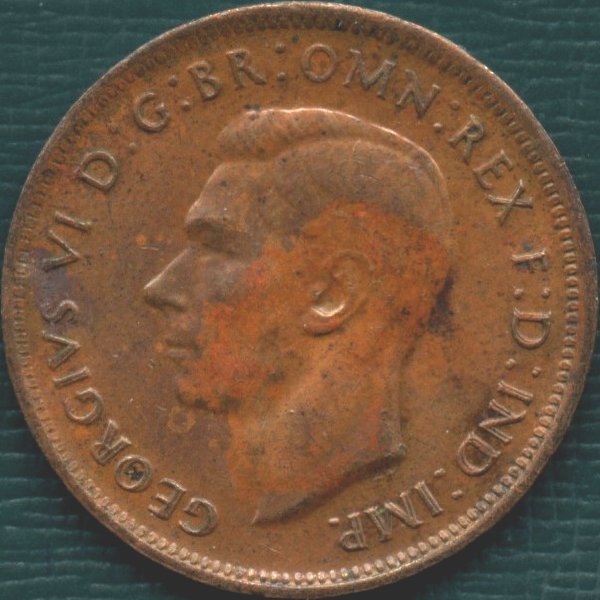
Obverse of a 1943 halfpenny showing a doubled legend produced by imperfect alignment of die and punch on the second pressing.
The double-nose Queen
There are four anomalies clearly visible in this picture.
1. The nose is doubled.
2. The ribbon is doubled.
3. There is doubling of the legend on the right.
4. The upper chest is doubled.
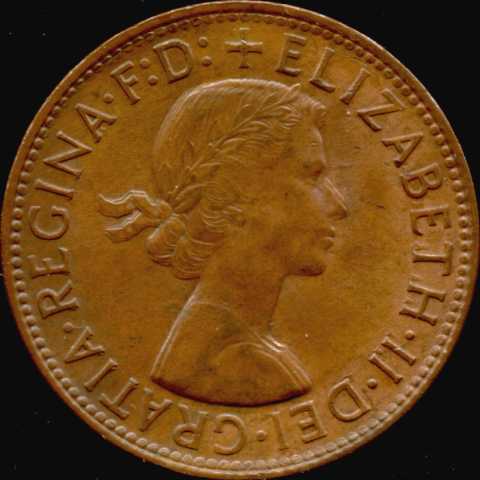
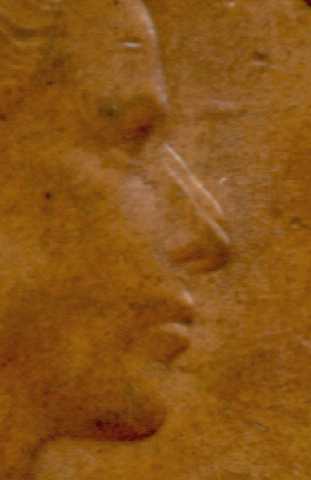
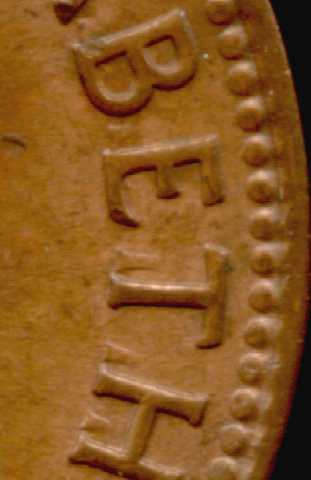
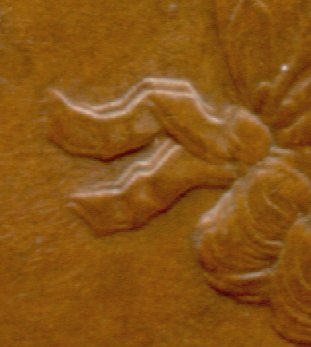
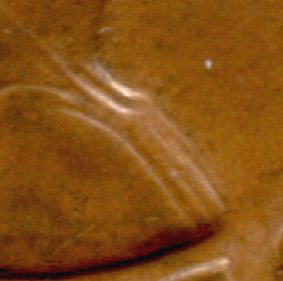
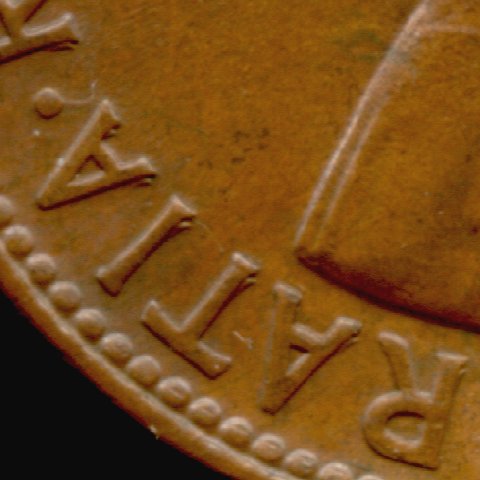
Doubling of the legend on the lower left. This is not obvious from the main picture but shows clearly in the high-resolution image
Other Australian coins errors

